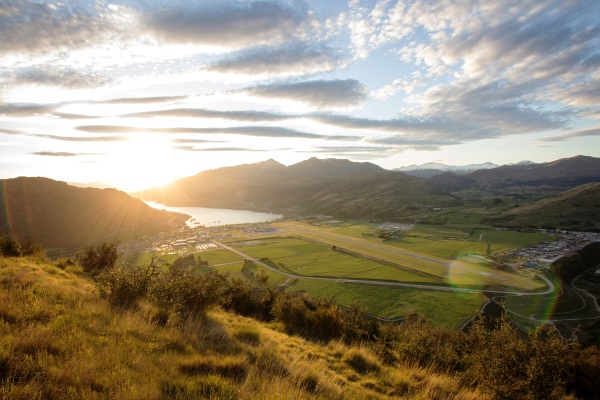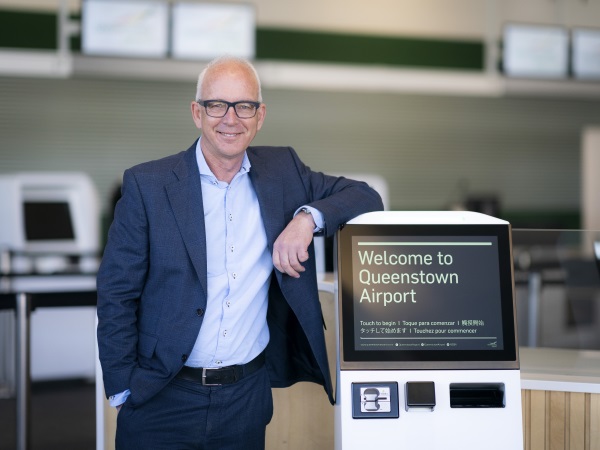Queenstown Airport predicts 3.2 million passenger movements a year by 2032
Queenstown Airport boss Glen Sowry says conversations around future tourism numbers to Queenstown are ‘‘clearly … very political’’, but he does not believe the airport is the major driver of tourism demand.
The airport’s today released its 10-year strategic plan, which will guide the detail of the masterplan over the same period.
Sowry — who’s just marked his first year in the top job — has categorically ruled out any expansion of the airport’s existing air noise boundaries over that period, despite forecasting a ‘‘reasonably significant’’ increase in passenger numbers over the decade.
He says feedback from a broad cross-section of the community made it ‘‘very clear’’ the proposal presented in 2018, to significantly expand air noise boundaries, ‘‘was a mistake’’.
‘‘We created a disconnect with the community we serve.
‘‘When we looked at, in a great deal more detail, what the capacity was within the available air noise boundaries, particularly with the new NEO (new engine option) aircraft, being considerably quieter, we came out and made the decision to take this debate around air noise boundaries off the table, because it was clearly an area creating significant angst amongst the community.’’
‘‘That was a decision made, and that helped shape, in large part, the balance of the strategic plan.’’
The airport’s forecasting 3.2 million passenger movements per annum by 2032 — in 2019, pre-Covid, that was 2.4m.
But that won’t necessarily mean more planes landing, he says, pointing to the A320 NEO, which has 27% more seats and is quieter than the existing A320s in operation.
‘‘So, one plane carries more people, so from an environmental perspective, per passenger it’s significantly less, and as people who live along Kelvin Heights and near the airport, a lot of them have commented to me how noticeably quieter the NEOs are, and that’s a positive thing for the community.’’
‘Hotel beds, not airport, driving demand’
Sowry says airlines’ projections of demand are an ‘‘almost unconstrained view’’, but the airport company’s ‘‘very respectful and mindful’’ of being a majority community-owned asset — Queenstown’s council’s the majority shareholder, with 75.01% of shares, the balance held by
Auckland International Airport.
‘‘Our job, as I see it, is to deliver social and economic benefit for the community, whilst operating in a sustainably-responsible manner.’’
Given conversations over the past couple of years around sustainable and regenerative tourism, and how to better manage numbers in future, Sowry accepts the airport’s an ‘‘enabler’’ of tourism, but notes ‘‘well over 50% of visitors’’ come by road.
‘‘If I were to be provocative, my question is, who’s putting the toll booth up at Roaring Meg and Kingston to stop the rest coming?
‘‘I heard an interesting stat the other day, that there’s been a 38% increase in hotel beds in Queenstown in the last few years.
‘‘I would argue that is what is driving the demand for tourism into Queenstown, not the airport.’’’
In terms of physical work at the airport, the masterplan will deal with a partial terminal replacement, largely due to the need to seismic-strengthen parts of it.
While part of the building, around international arrivals and departures, is at 100% of New Build Standard (NBS), the check-in area is about 70%.
The remainder of the building, however, sits at 34% NBS, which is the minimum standard.

‘‘We [the airport] are designated a ‘utility lifeline’.
‘‘When you stop and think about it — you’ve got three ways out of here, Crown Range, Kawarau Gorge and Kingston Road, all of which are highly vulnerable in a seismic event.
‘‘You’re going to have 100,000 visitors in the region on any given day that we’re going to need to evacuate out of this region.
‘‘If you look at the experience in the Kaikoura earthquakes, it was cut off and they had to use the navy to get people out … that would be a tiny number of people compared to what we’ll need to deal with here.
‘‘The importance of this airport in the event of a big seismic fault … is essential and it needs to be an airport that’s going to be fit-for-purpose and able to sustain itself.’’
Other parts of the masterplan will address ground transport and parking, sustainability measures and where general aviation (GA) should be located in future.
At present, GA operators are at Lucas Place — ‘‘it’s in the wrong place’’ — however the airport’s working with Civil Aviation Authority on safety aspects to ensure as GA grows, there’s a ‘‘robust and operationally-safe environment’’ for GA operators to interact with commercial aircraft.
Following community consultation, the masterplan should be finalised in the next 12 months.




